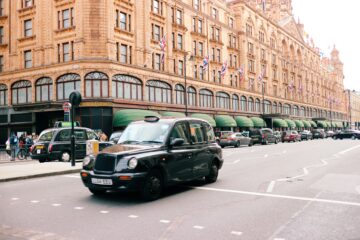Do you know where the world’s oldest purpose-built sports stadium is located? If you guessed Crystal Palace, then you are correct! This London landmark has a long and varied history, and there are many interesting facts about it that you may not be aware of.
Here are seven fascinating facts about Crystal Palace that you need to know:
1. Great Exhibition Of 1851
The Crystal Palace in London was originally built to house the Great Exhibition of 1851. The exhibition was a huge success, with over six million people attending.
The Crystal Palace was designed by Joseph Paxton and was constructed from cast iron, plate glass, and wrought iron. It was an incredible feat of engineering, and at the time was the largest glass building in the world.
The building was eventually relocated to Sydenham Hill in South London, which remained until a fire destroyed it in 1936.
Today, the area around the Crystal Palace is a popular spot for Londoners and tourists alike. The park is home to the Crystal Palace National Sports Centre, which hosts various events and activities. There are also several restaurants, bars, and shops in the area.
2. It Was Moved To Sydenham Hill
After the Great Exhibition, the Crystal Palace was dismantled and moved to Sydenham Hill in South London. It was reopened in 1854 and became a huge tourist attraction.
The Palace was once again redesigned, this time by Owen Jones. He added several features, including a concert hall, art gallery, and museum. Eventually, Crystal Palace became a centre for entertainment and culture and a tourist destination.
3. The Palace Was Destroyed By Fire In 1936
In 1936, the Palace was destroyed by fire. The cause of the fire is unknown, but it is thought to have started in the northwest section of the building.
The Palace was not insured, so the loss was a massive blow to the company. The site remained derelict for many years until it was finally redeveloped.
The fire at the Empire Palace Theatre in London’s West End was one of the worst theatre fires of the 20th century. It killed 64 people and injured over 100 more. The cause of the fire was never officially determined, but it is believed to have started in the theatre’s basement.
The blaze quickly spread through the theatre, causing the roof to collapse. Many of the victims were crushed by the falling debris. Others were overcome by smoke and suffocated.
After several hours, the fire was finally controlled. Still, the damage to the theatre was so severe that it had to be demolished.
This tragedy led to several changes in fire safety regulations, including requiring all theatres to have at least two exits.
The Empire Palace Theatre was rebuilt and renamed the London Palladium. It is still in use today and is one of the most famous theatres in the world.
4. It Was Rebuilt In 1951
Following the destruction of the Crystal Palace, a new building was constructed on the same site in 1951. This new building was designed by Sir Giles Gilbert Scott and was built from concrete and steel.
The new Palace had several different features, including a concert hall, art gallery, and museum. It also had a swimming pool, which was a popular attraction.
5. Used For The 1948 Olympic Games
The Crystal Palace was the main stadium for the 1948 Olympic Games. The games were a huge success, with athletes from all over the world participating.
The swimming events were held in the Palace’s pool, and the track and field events took place on the grounds. The Palace was also used for the opening and closing ceremonies.
After the games, the Crystal Palace continued to be used as a venue for sporting events, concerts, and other large-scale events.
In recent years, the Palace has been undergoing a significant restoration project, with work being carried out to repair the damage caused by years of neglect.
6. Opening And Closing Ceremonies Of The 1948 Olympic Games
The Crystal Palace was the main stadium for the 1948 Olympic Games. The games were a huge success, with athletes from all over the world participating.
The swimming events were held in the Palace’s pool, and the track and field events took place on the grounds. The opening ceremony was held in the main hall of the Palace, and the closing ceremony was held on the grounds.
The Palace was also used for other sporting events during the Games, including boxing, fencing, weightlifting and wrestling.
After the Games, the Palace continued to be used for sporting events, concerts, exhibitions, and other events. Later, the Palace was the venue for the British Empire Games.
The Crystal Palace has been undergoing a significant restoration project recently, with work being carried out to repair the damage caused by years of neglect.
7. Crystal Palace Subway Restoration Project
The project restoring the Grade II listed Crystal Palace Subway is complete. The work, carried out by award-winning conservation architects Thomas Ford & Partners in May 2020, includes a detailed survey of the structure’s current condition.
Designs are also being developed for a new roof over the east courtyard to replace the roof that was lost in the years following the great fire of 1936. Once completed, it is envisaged that the Subway will be removed from the Heritage at Risk Register and opened to the public for the first time in over 80 years.
The project is being funded by a grant from the National Lottery Heritage Fund, with support from the Friends of Crystal Palace Subway (FCPS) and Historic England.
In 2017, FCPS was awarded a grant from the National Lottery Heritage Fund to restore the Subway. The work is now underway and is expected to be completed in 2020.
Wrapping Up!
The Crystal Palace area in London, South East London, is a beautiful and popular tourist destination. It is home to many historical landmarks and buildings and a hub for activity and excitement. There is always something going on in this vibrant area, making it the perfect place to visit whether you are looking for culture, history, or a good time.


